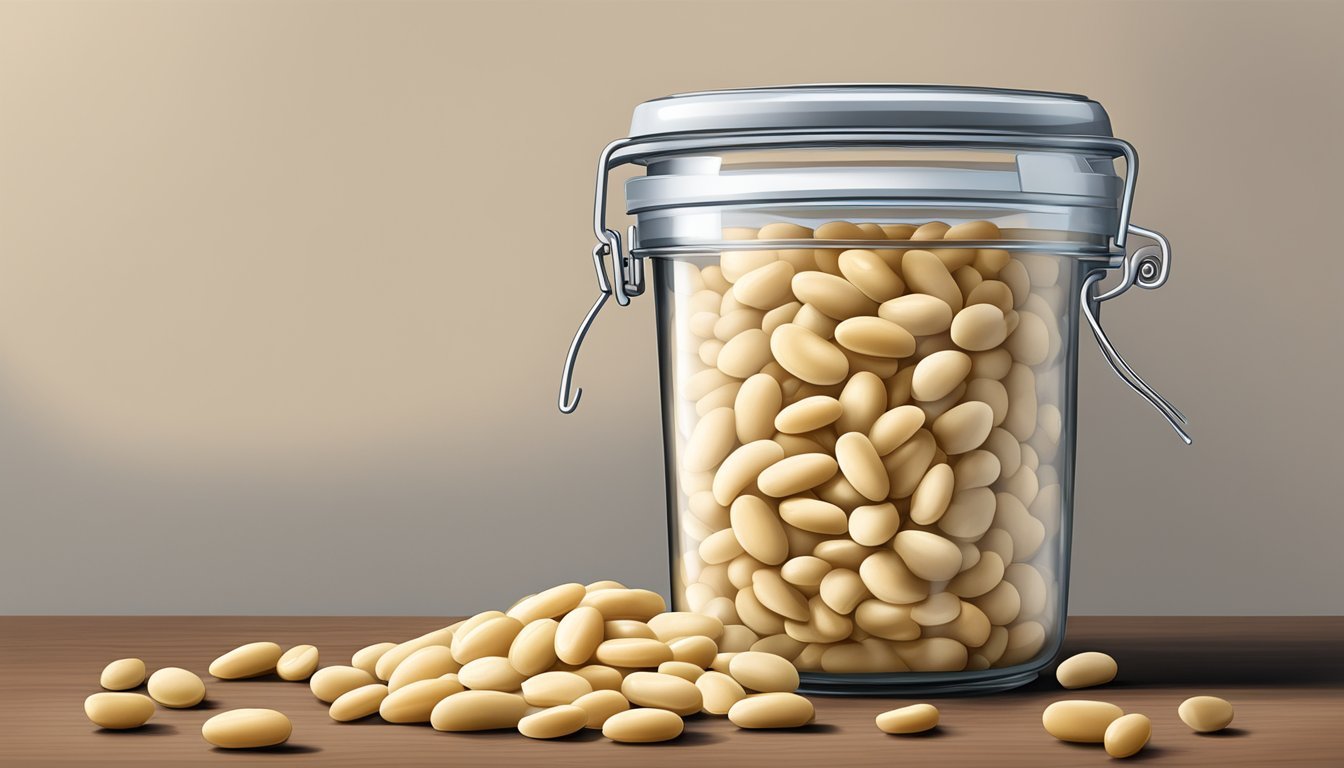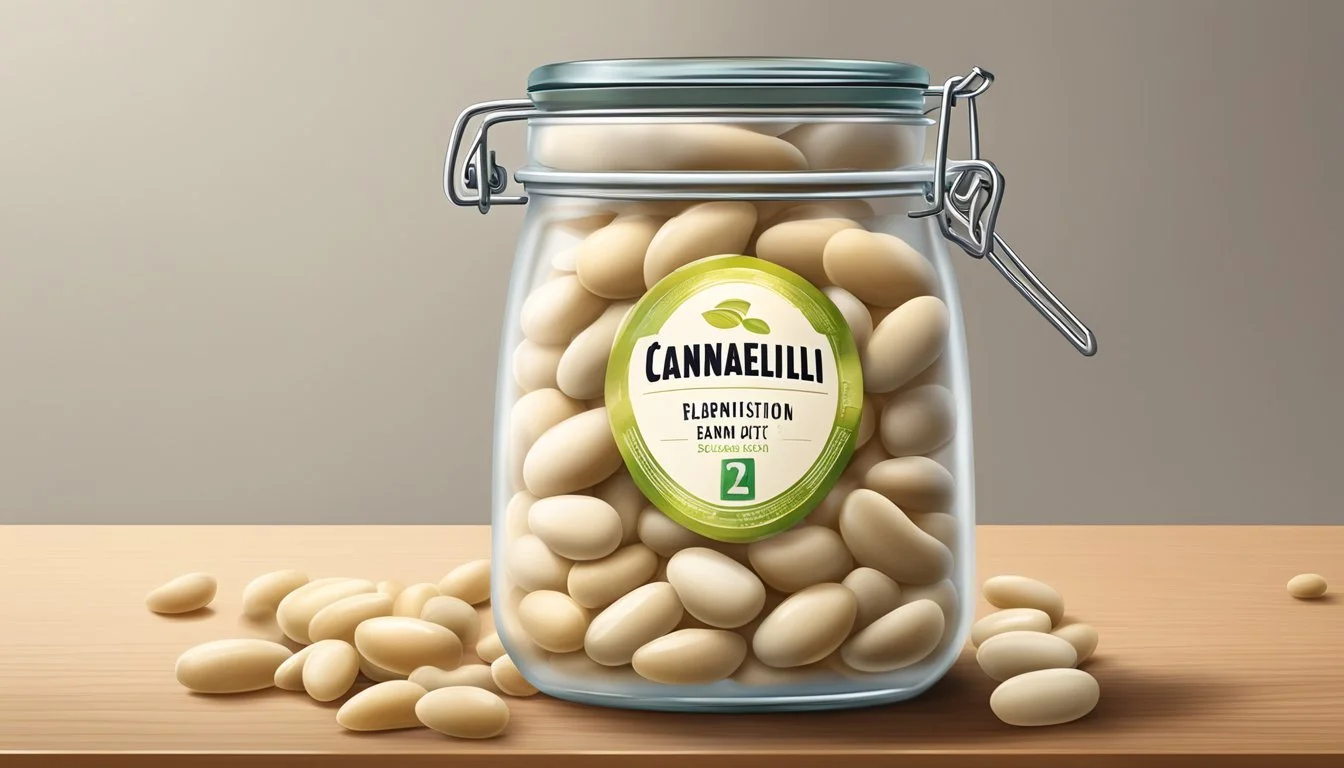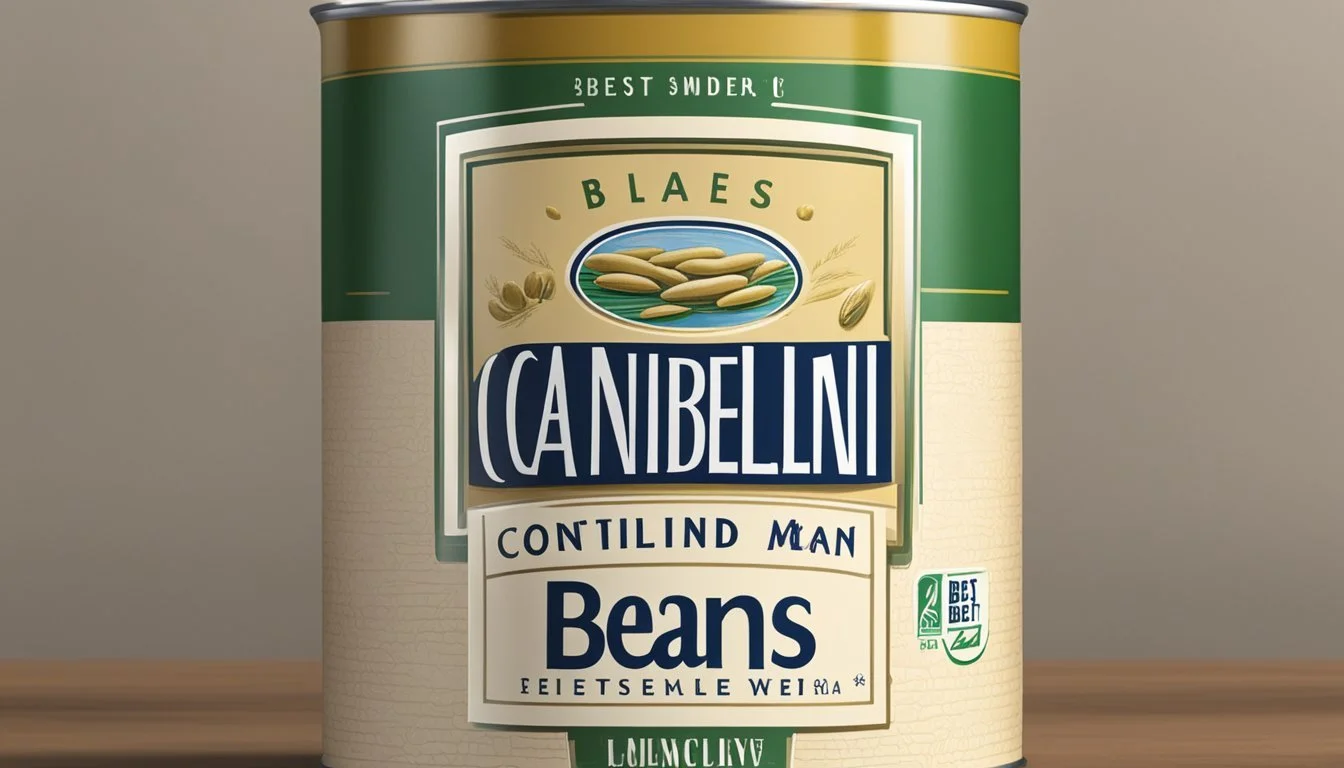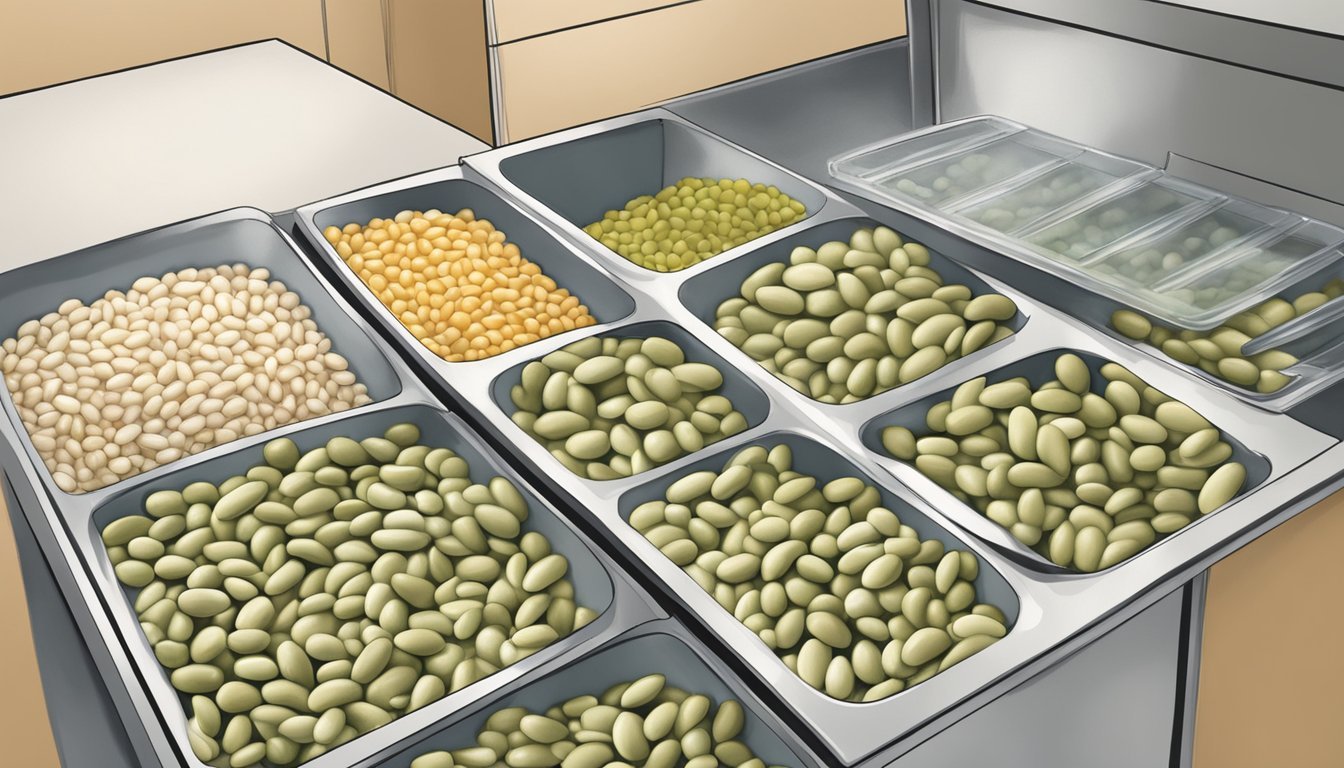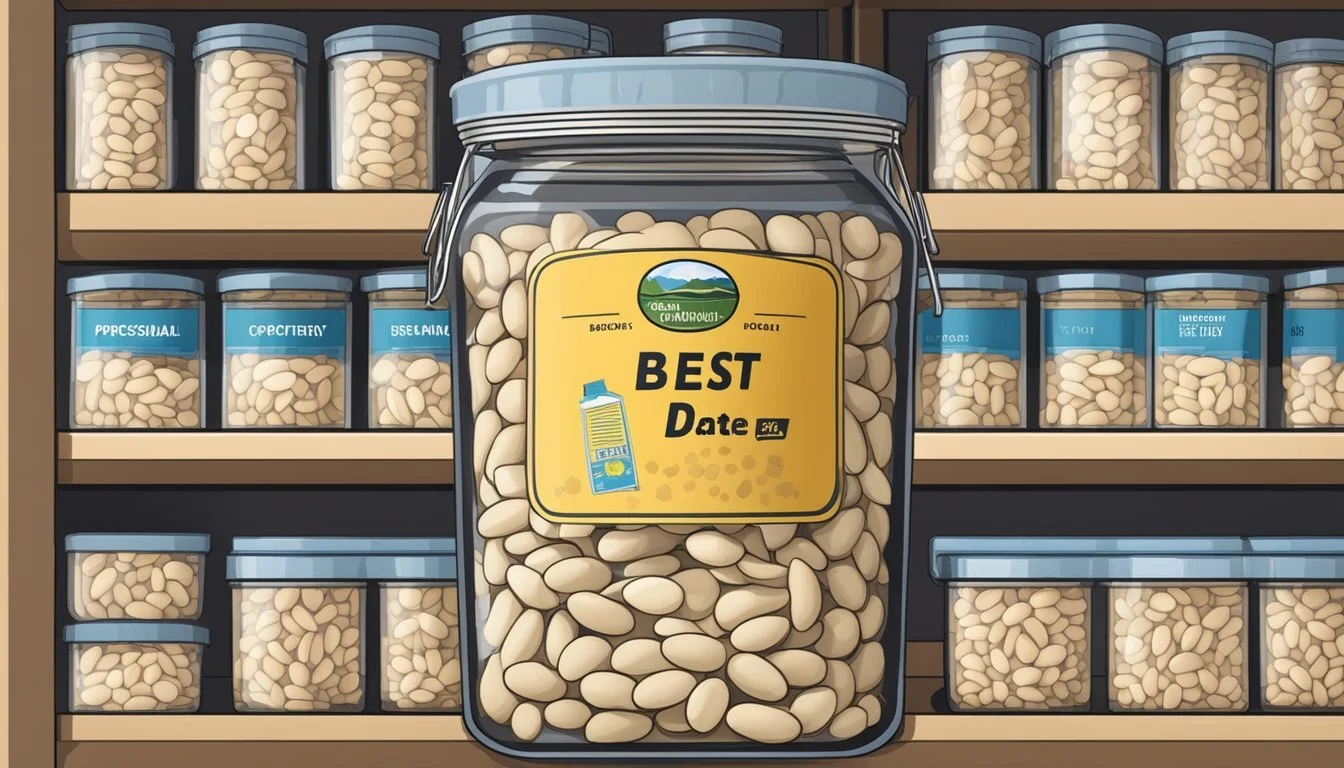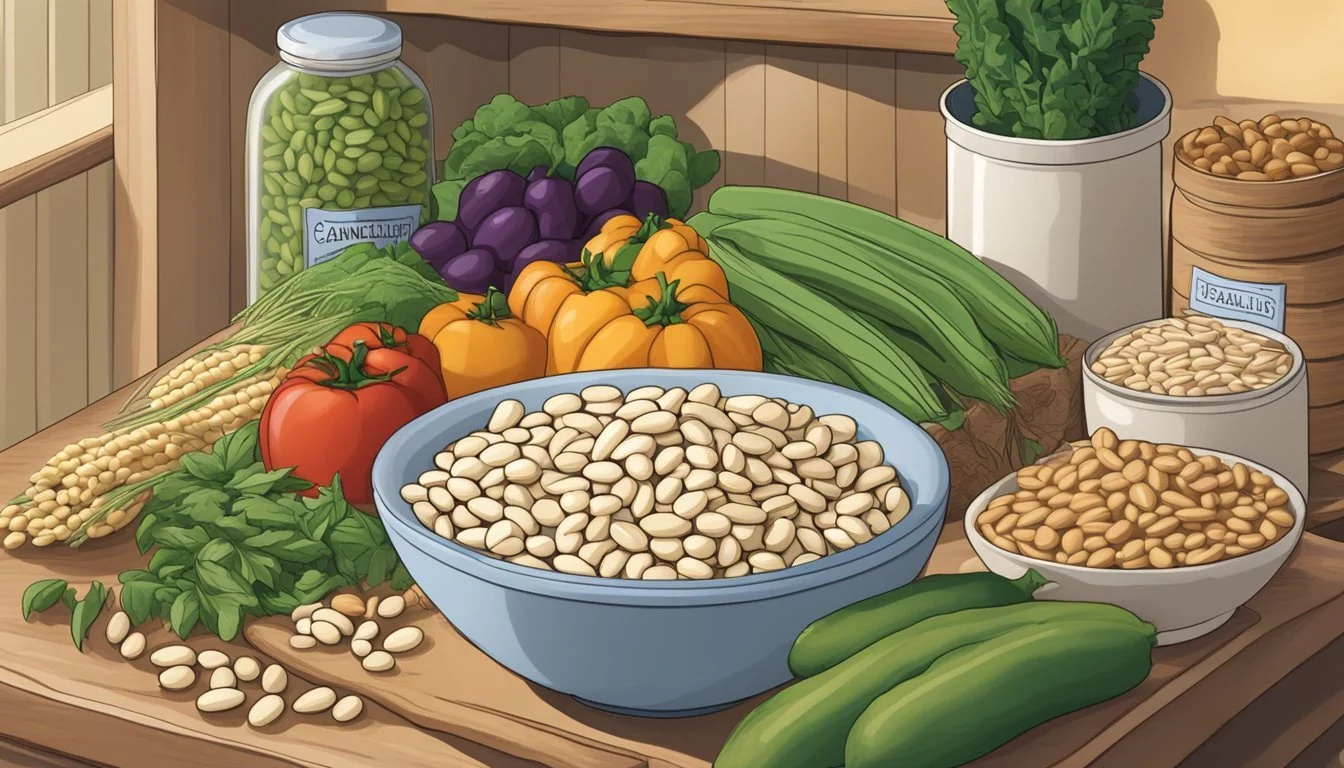How Long Do Cannellini Beans Last?
Shelf Life and Storage Tips
Cannellini beans, known for their nutty flavor and creamy texture, are a popular choice among legumes. They not only add a protein-rich component to meals but also offer valuable fiber, iron, and folate, contributing to a nutritious diet. Understanding the shelf life of cannellini beans is crucial for maintaining their nutritional benefits and ensuring food safety. Whether dried, canned, or cooked, the storage method and conditions significantly influence their longevity.
Dried cannellini beans (how long do dried cannellini beans last?) boast an impressive shelf life when stored properly. By keeping them in an airtight container in a cool, dry place, they can last up to 12 months without losing quality. On the other hand, canned cannellini beans have a more limited shelf life once opened, generally lasting up to five days in the refrigerator. It is important to store them correctly to prevent spoilage and preserve their nutritional value.
When it comes to cooked cannellini beans, swift refrigeration is key to extending their usability. They should be stored in the fridge within two hours of cooking and can be expected to last between 3 to 5 days. For those looking to prolong the life of their cooked beans (how long do cooked beans last?), freezing is an option, enabling them to last for approximately 6 months while retaining most of their quality. Proper storage and handling are essential for making the most of cannellini beans’ nutritional offerings, ranging from their protein content to essential minerals.
Identifying Cannellini Beans
In order to fully appreciate cannellini beans, it is essential to understand their distinctive characteristics and nutritional value. These beans are not only a staple in Italian cuisine but also a nutritious legume that can benefit any diet.
Characteristics of Cannellini Beans
Cannellini beans, often referred to as white kidney beans (how long do kidney beans last?), are recognized for their oval shape and creamy white color. When cooked, they have a fluffier texture and a slightly nutty, mild flavor which makes them incredibly versatile in culinary uses. They hold their form well, which is why they are a popular addition to soups, stews, and salads.
Nutritional Profile
The nutritional benefits of cannellini beans are notable due to their high content of fiber and protein, making them an excellent food choice for those looking to support a healthy diet. They also provide important nutrients such as iron and folate. Below is a brief overview of their nutritional value:
Fiber: Aids in digestion and can help regulate blood sugar levels.
Protein: Essential for muscle building and repair.
Iron: Vital for oxygen transport within the bloodstream.
Folate: Important for DNA synthesis and cell growth.
Nutrient Importance Fiber Digestive health, blood sugar regulation Protein Muscle growth and repair Iron Oxygen transport Folate DNA synthesis, cell growth
Cannellini beans contribute significantly to a well-rounded diet, combining flavor, texture, and nutrition to meet a variety of dietary needs.
Storing Cannellini Beans
Proper storage methods for cannellini beans are crucial for maximizing their shelf life and maintaining their quality. These methods vary depending on whether the beans are dried or canned, and on the intended duration of storage.
Short-Term Storage
For canned cannellini beans that have been opened, they should be transferred to an airtight container if not used immediately. They can be refrigerated for 3 to 5 days to maintain freshness. Cooked cannellini beans also fall into this category, and to prevent bacterial growth, they should be placed in the refrigerator within an hour after cooking.
Long-Term Storage
Dried cannellini beans require different considerations for long-term storage. To ensure they retain their quality, they should be kept in an airtight container. This container should then be placed in a cool, dry place away from direct sunlight to avoid humidity and heat, which can degrade the beans. Under these conditions, dried cannellini beans can last for up to 12 months.
For those looking to extend the shelf life further, cooked beans can be stored in the freezer. In a proper freezer-safe container, they can last for 1 to 2 months. It's vital that the temperature and storage conditions remain consistent to prevent freezer burn and spoilage.
Shelf Life of Cannellini Beans
The shelf life of cannellini beans varies whether they are uncooked or cooked, and depends greatly on their storage conditions. Proper storage is key to maintaining their quality and nutritional content, including their valuable protein.
Uncooked Beans Shelf Life
Uncooked cannellini beans, when stored properly, display a long shelf life.
Dried cannellini beans should be kept in an airtight container in a cool, dry place. Under these conditions, they can last for up to 12 months while maintaining their best quality.
Unopened canned cannellini beans can typically last for 3 to 5 years at peak quality if they are kept in a stable, cool environment away from extreme temperatures.
Cooked Beans Shelf Life
Once cannellini beans are cooked, their shelf life diminishes significantly.
Refrigerated: Cooked cannellini beans should be stored in a tightly sealed container in the refrigerator and generally last for 3 to 5 days.
Frozen: If placed in an airtight container or tightly sealed freezer bag, cooked cannellini beans can last for up to 6 months. It's recommended to use them in recipes where they will be mashed or pureed, as their texture may change after freezing and thawing.
While cannellini beans may remain safe to eat past their expiration date, their quality, including taste and texture, may not be at its best. It is preferable to consume them within the stated shelf life to enjoy their optimal nutritional benefits.
Factors Affecting Bean Quality
Cannellini beans, like other legumes, are susceptible to quality deterioration over time. The key to maintaining their quality lies in controlling temperature and moisture during storage.
Temperature and Moisture
Beans' longevity is significantly influenced by the ambient temperature and moisture levels. Cannellini beans should be stored in a cool, dry place to prevent mold growth and degradation. High temperatures can hasten the loss of moisture in dried beans, resulting in a harder bean that takes longer to cook. Conversely, excess moisture can lead to fungal growth, which can spoil the beans.
Optimal conditions: less than 60% humidity level, temperatures between 50°F to 70°F (10°C to 21°C)
Indicators of moisture issues: softness, discoloration, or a musty odor
Storage Containers
The choice of storage container directly affects the shelf life and quality of cannellini beans. For dried beans:
Airtight containers: Essential for keeping beans dry and protected from insects and contaminants. Glass jars with tight-fitting lids are ideal; plastic storage options should be avoided if they are not airtight.
Freezer bags/heavy-duty freezer bags: Suitable for cooked beans or when freezing dried beans to extend their storage life beyond the typical 12 months. Ensure all air is removed before sealing to prevent freezer burn.
Ideal materials:
Glass: Nonporous and airtight
Metal with airtight seals
Plastic, provided it is heavy-duty and labeled as airtight
Preparation and Usage Tips
Preparing cannellini beans properly can greatly enhance their flavor and texture in a variety of dishes. These versatile legumes can be incorporated into recipes ranging from soups to salads, and even hummus. Proper cooking ensures safety and optimal taste.
Cooking Cannellini Beans
To cook dried cannellini beans, one first needs to soak them, which will typically reduce cooking time and make the beans easier to digest. Soaking can be done overnight or using the quick soak method where beans are boiled for a few minutes and then left to stand for an hour. After soaking, drain and rinse the beans, transfer them to a pot, add fresh water, and simmer until tender — this can take about an hour or more. For flavor, adding aromatics like garlic, onion, or herbs during the cooking process is recommended.
Soak: Overnight or quick soak
Rinse: Discard soaking water
Simmer: Until tender (approx. 1+ hours)
Flavor: Add garlic, onion, or herbs
Cannellini Beans in Recipes
Cannellini beans have a mild, nutty flavor and creamy texture, making them ideal for a wide range of recipes. They can be a protein-rich addition to salads or you can puree them into a smooth hummus. In soups and stews, they contribute a hearty element. When using canned beans, they should be rinsed to remove excess sodium before adding to the dish. If incorporating into a baking recipe, such as a bean-based cake or brownies, ensure they are well-puréed to avoid altering the intended texture of the baked good.
Salads: Add for protein and texture
Hummus: Puree until smooth
Soups/Stews: Provide a hearty element
Baking: Puree for texture consistency
Safety and Spoilage
Ensuring that cannellini beans are safe to consume involves recognizing signs of spoilage and understanding proper food safety measures. This awareness is vital for preventing foodborne illnesses.
Signs of Spoilage
Cannellini beans, both dried and canned, will exhibit obvious indicators when they've spoiled. For canned cannellini beans, one should be wary of bulging cans, which suggest bacterial growth that produces gas. Once opened, any off odors, discoloration, or a slimy texture are clear signs that the beans should not be consumed.
Dried cannellini beans have a longer shelf life, but they can also become unsuitable for eating if they show signs of a rancid smell or become infested with pests. Moreover, the presence of mold or discoloration on the surface indicates spoilage.
Food Safety Considerations
The safe consumption of cannellini beans requires careful handling and storage. Canned cannellini beans should be stored in the fridge after opening and used within five days to prevent bacteria growth that could lead to food poisoning. To maintain quality, it's advisable to keep them in a sealed container.
For dried beans, storage in a cool, dry place in an airtight container is key to prolonging their life, typically up to 12 months. While they may remain safe after this period, prolonged storage can produce a metallic taste or reduced nutritional value. Always cook dried beans thoroughly to eliminate potential bacteria that cause illness.
Freezing and Thawing
Proper freezing and thawing preserve the quality and extend the shelf life of cannellini beans. These procedures ensure that cooked cannellini beans remain safe and flavorful when stored in the freezer and restored to a palatable state before cooking.
How to Freeze Cannellini Beans
Freezing cannellini beans is a straightforward process:
Allow cooked beans to cool: Ensure that the cooked cannellini beans have cooled completely to prevent condensation and ice crystal formation, which can affect their texture.
Portion the beans: Divide the beans into usable portions to avoid thawing more than needed at one time.
Prepare containers: Transfer the beans into freezer-safe bags or containers. Squeeze out any excess air if using bags to prevent freezer burn.
Label containers: Mark the date of freezing on the container to keep track of the freezer time.
Frozen cannellini beans can maintain their best quality for up to six months in the freezer. While they remain safe beyond that time, the quality may decline.
Thawing Techniques
There are a few methods for thawing cannellini beans:
Refrigerator Thawing: Transfer the frozen beans to the refrigerator and allow them to thaw overnight. This method keeps the beans at a safe temperature, reducing the risk of bacterial growth.
Microwave Thawing: Use the defrost setting on a microwave to quickly thaw the beans. Stir occasionally to ensure even thawing. Beans should be used immediately after microwave thawing.
Cold Water Thawing: Place the sealed beans in a leak-proof bag and submerge them in cold water. Change the water every 30 minutes until thawed. Cook them immediately after thawing.
It is important to note that once thawed, beans should not be refrozen and, instead, should be used within two days. If using a microwave or cold water thawing techniques, proceed with cooking immediately after they are thawed.
Canned Cannellini Beans
When it comes to the longevity of canned cannellini beans, proper storage plays a pivotal role in preserving their quality. Once opened, the preservation time is notably shorter compared to their unopened counterparts.
Shelf Life and Storage
Unopened Canned Cannellini Beans:
Best Quality: 3-5 years
Safe Consumption: Potentially safe beyond this period, but quality may decline
Storage Conditions: Cool, dry place away from direct sunlight
Noticeable Signs of Spoilage:
Cans showing signs of leaking, bulging, rusting, or are severely dented should be discarded.
Opened Canned Cannellini Beans:
Refrigerator Shelf Life: Up to 5 days
Storage Method: Transfer to a covered glass or plastic container
Liquid Preservation: Keeping beans submerged in their original liquid can help retain both moisture and flavor.
Opening and Using Canned Beans
Once a can of canned cannellini beans is opened, they should be consumed within a relatively short timeframe. To extend their freshness:
Refrigerate: Store in the fridge promptly after opening.
Salt Addition: Adding salt to the beans when cooking can impact their longevity, potentially reducing it.
Precautions:
Do not consume beans if the opened can has been left at room temperature for over 2 hours.
Always inspect the beans for any signs of spoilage, such as an off smell or appearance, before use.
Practical Tips for Kitchen Management
To keep cannellini beans at their best, organization and proper storage are key. By following these specific tips, they will remain a fresh and ready ingredient in any kitchen.
Organizing Beans for Easy Access
One should store cannellini beans in clear, airtight containers which not only helps in keeping them dry but also allows for easy identification and monitoring of their quantity. Labels with the date of storage can further enhance management, ensuring the oldest beans get used first, a practice known as "first in, first out."
Dry Cannellini Beans: Store in a labeled airtight container. Place in a cool, dry area away from direct sunlight.
Cooked Cannellini Beans: Refrigerate in a clear container with a date label to monitor freshness.
Maximizing Freshness
To preserve their quality, cannellini beans must be kept in a cool, dry place. This slows down deterioration and prevents the growth of mold or bacteria.
Moisture Control: Use desiccants in storage areas to maintain a dry environment.
Temperature: Ensure that the storage area remains consistently cool, preventing fluctuations that can lead to spoilage.
For cooked cannellini beans, they should be refrigerated within two hours of cooking and can be kept for 3-5 days. If frozen, a timeframe of up to six months is recommended for best quality. Maintaining a temperature of 0°F (-18°C) in the freezer is essential to halt spoilage.
Health Benefits and Dietary Considerations
Cannellini beans are a nutrient-dense food that supports a healthy diet. They offer nutritional benefits essential for both omnivore and plant-based diets due to their rich fiber and protein content.
Cannellini Beans in Healthy Diets
Cannellini beans, or white kidney beans, are a staple in various diets due to their high nutritional value. These beans are an excellent source of protein and fiber, making them a healthy choice for individuals seeking to maintain or improve their dietary regimen. They are particularly beneficial to vegans and vegetarians as a plant-based protein alternative. Here are specific nutritional benefits of cannellini beans:
Protein: They provide essential amino acids needed for muscle repair and growth.
Fiber: A significant source of dietary fiber that aids in digestion and helps regulate blood sugar levels.
Iron: Important for transporting oxygen throughout the body.
Folate: Essential for DNA synthesis and repair.
Low fat: They contain minimal fat, which can contribute to a heart-healthy diet.
Alternative Uses in Special Diets
For those with special dietary needs, cannellini beans provide versatile alternatives. Their neutral flavor and smooth texture make them suitable for various culinary adaptations, such as:
Gluten-free diets: As a gluten-free ingredient, cannellini beans can be ground into flour or used as a thickening agent.
Low-fat diets: Cannellini beans can serve as a low-fat substitute in recipes that traditionally use higher fat ingredients.
Vegan diets: They can also act as a base for vegan-friendly spreads, dips, and even plant-based cheeses due to their creamy consistency when blended.
Inclusion of cannellini beans in a diet not only enhances nutritional intake but also provides a variety of options for those with alternative dietary requirements.
Creative Cooking Ideas
Cannellini beans, with their mild flavor and creamy texture, offer a versatile base for numerous dishes, from hearty soups to robust salads. They absorb flavors well, making them perfect for innovative recipes and meat substitutes.
Innovative Recipes with Cannellini Beans
Soups and Salads:
Soup: Cannellini beans are perfect for adding substance to a variety of soups. For a classic choice, one could prepare a Tuscan White Bean Soup with cannellini beans simmered alongside herbs and vegetables.
Salads: They can also be the star of a Mediterranean Bean Salad, where they're tossed with olive oil, lemon juice, and crisp vegetables.
Hummus and Dips:
Hummus: Puree cannellini beans to create a smooth and creamy White Bean Hummus as an alternative to traditional chickpea-based hummus, seasoned with garlic, lemon, and tahini.
Dips: Another option is to blend them into a Cannellini Bean Dip, enhanced with roasted garlic and rosemary, perfect for pairing with crusty bread or crispy vegetables.
Casseroles and More:
Casseroles: They are an excellent addition to Vegetable Casseroles, providing a satisfying depth to these baked dishes.
Quesadillas and Burritos: Incorporate cannellini beans in Quesadillas or Burritos for a delightful twist, mixed with cheese and spices before being heated to meld the flavors.
Beans as a Meat Substitute
Bean Burgers and Burritos:
Bean Burgers: Creating Cannellini Bean Burgers is straightforward. One mashes the beans and adds breadcrumbs, spices, and an egg to bind the mixture before forming patties and cooking them to golden perfection.
Burritos: They also serve as a filling substitute in Vegetarian Burritos, combined with rice, salsa, cheese, and wrapped in a warm tortilla.
Benefits of Beans in Cooking:
Benefits: Using cannellini beans as a meat substitute offers several benefits. They are lower in fat and higher in fiber compared to meat, contributing to a nutritious and heart-healthy diet. They also provide essential proteins required for daily dietary needs.
By incorporating cannellini beans into various dishes such as salads, soups, and as a meat substitute in burgers and burritos, one can enjoy the nutritional advantages they offer while experimenting with different flavors and textures in cooking.
FAQs About Cannellini Beans
Shelf Life
How long do dried cannellini beans last?
Storage conditions: Dried cannellini beans have a shelf life of about 1 year if stored in a cool, dry place in an airtight container.
Can unopened canned cannellini beans go bad?
Unopened cans: They are typically best consumed within 2–3 years of the purchase date for optimal quality but will remain safe beyond that if stored properly.
After Opening
How long do canned cannellini beans last once opened?
Refrigeration: Once opened, canned cannellini beans can last for approximately 5 days in the refrigerator.
How long do cooked cannellini beans last in the fridge or freezer?
Refrigerated cooked beans: They can last for 3–5 days.
Frozen cooked beans: They can be stored in the freezer for up to 8 months for best quality.
Cooking & Thawing
How to safely thaw frozen cannellini beans?
Option one: Thaw overnight in the refrigerator.
Option two: For a quicker method, use the microwave on the defrost setting.
Spoilage
How can someone tell if cannellini beans are spoiled?
Signs of spoilage: Off smell, a change in texture, or discolored beans should be discarded.
Quality in Meals
Does freezing affect the quality of cannellini beans in recipes?
Freezing: It does not significantly affect the nutrition or flavor but may alter the texture slightly.
Nutritional Value
Are cannellini beans nutritious?
Health benefits: They are rich in protein, fiber, and various nutrients, making them a valuable addition to a healthy diet.
Safe Consumption
Is it safe to eat cannellini beans past their expiration date?
Safety: While canned beans can be consumed past their expiration if they show no signs of spoilage, it is always best to observe food safety practices and consume products within recommended dates.


